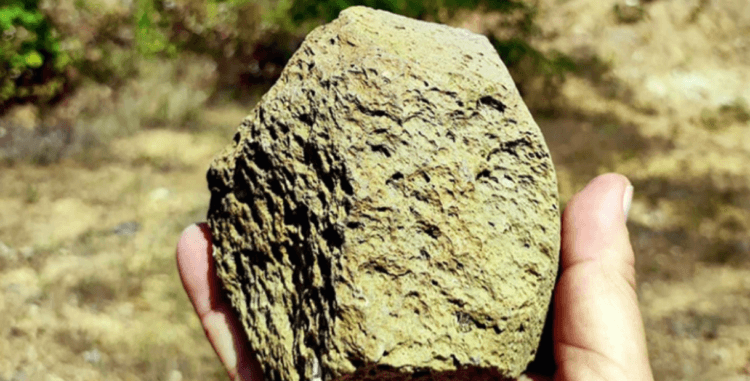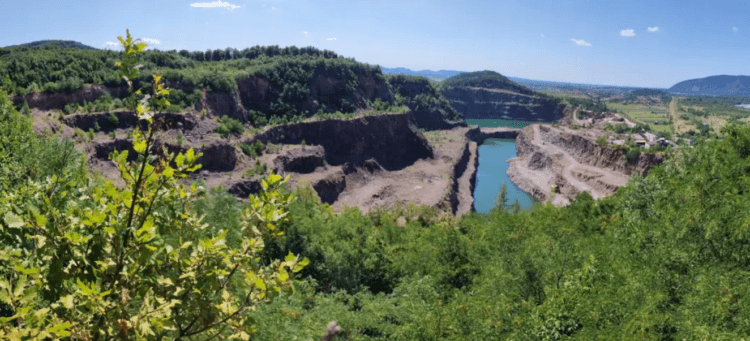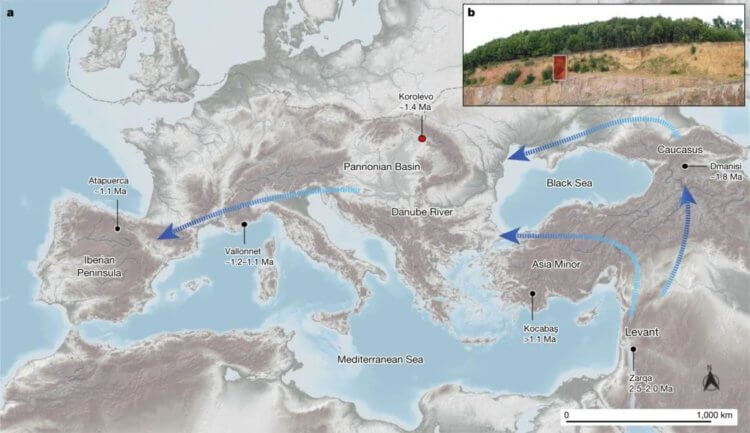Until recently, the age of the oldest tools found in Europe was 1.1-1.2 million years. They were discovered in France and Spain. Of course, we are not talking about Homo Sapiens, or even Neanderthals, but an older fossil species that was the direct ancestor of Homo sapiens. A recent study showed that these ancient people came to Europe even earlier – they settled in the Carpathian Mountains more than 1.4 million years ago. This is evidenced by the dating of ancient tools discovered back in the 80s in the village of Korolevo in the Transcarpathian region.

The oldest human settlement in Europe was located in Transcarpathia
Contents
- 1 Traces of ancient people in the Carpathians
- 2 The most ancient stone tools in Europe
- 3 People migrated from the Caucasus to Europe
- 4 What kind of people lived in the Carpathians one and a half million years ago
Traces of ancient people in the Carpathians
Ancient stone tools were discovered during excavations in the 70s and 80s, which were conducted at the Korolev site in the Transcarpathian region. At this site, Soviet archaeologists discovered a settlement of ancient hominids who lived for a long time. This is evidenced by the presence of several cultural layers.
Among the artifacts, axes, choppers, cores, flakes, etc. were discovered. Presumably, the stone tools belonged to the cultures of the Lower Paleolithic people. These were relatively simple instruments.

Stone tool discovered at a site in Korolevo
Initially, when dating finds, archaeologists relied on the magnetic characteristics of the soil layers in which the artifacts were discovered. Then studies showed that the age of the tools was 900 thousand years. This made them one of the oldest in Europe, but not the most ancient. As mentioned above, the tools discovered in France and Spain were older. However, dating technologies used 30-40 years ago cannot be called accurate.
The most ancient stone tools in Europe
European paleontologists and geologists decided to re-date the finds from the Korolevo site in order to more accurately determine their age. To do this, they used technology based on cosmogenic nuclides – rare isotopes formed when high-energy cosmic rays collide with chemical elements in minerals on the Earth's surface.
As you might guess, cosmogenic nuclides do not accumulate in the depths of the Earth. They occur only when the mineral is on the surface, that is, when cosmic rays interact with atoms of stable nitrogen-14 and magnesium-26. Changes in the concentration of these cosmogenic nuclides in the finds and the soil above can very accurately show how long ago the mineral was “buried” in the soil layers.

The site in Transcarpathia where excavations were carried out
Calculating the ratio of cosmogenic nuclides in the sediment layer, the team found that the artifacts were 1.4-1.42 million years old. The authors of the work report this in the journal Nature.
People migrated from the Caucasus to Europe
New dating has shown that stone tools discovered in the Carpathian Mountains are the oldest in Europe, but not the oldest human tools ever discovered. For example, the age of stone tools found in the Caucasus is 1.78-1.85 million years.
Thus, the discovery made covers the time gap between people who lived in the Caucasus 1.78-1.85 million years ago and in Europe 1.1-1.2 million years ago. It became material evidence that the central and eastern regions of Europe were inhabited by groups of ancient people who came from the east, and not from the south.

Map of migration of ancient people
What kind of people lived in the Carpathians one and a half million years ago
According to scientists, the ancestors of the people who lived in the Carpathians were populations of Homo erectus (Homo erectus, who is the direct ancestor of modern humans), who settled in the Middle East 8 million years ago. Traces of these people had previously been found in several regions of the Levant. Scientists believe that these people began to penetrate into Europe through Anatolia during the next interglacial era. Thanks to the warm climate, Homo erectus was able to spread far to the north. The migration took place through the Middle Danube Lowland.
Follow the link to our ZEN CHANNEL. We have prepared a lot of interesting, exciting materials dedicated to science for you.
Researchers also hope that future excavations and discovered artifacts will make it possible to understand how long Homo erectus was in Europe during the Ice Age. This information is very important, as it will reveal the history of the emergence of the common ancestors of modern humans, Neanderthals and Denisovans.
Finally, we suggest that you familiarize yourself with another, no less interesting find — workshop for the production of stone tools, 1.2 million years old. It was discovered by archaeologists in Ethiopia.